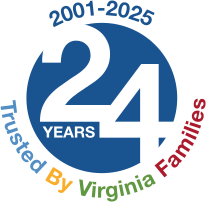Many find it difficult to balance responsibilities at work with those at home
Many millennials are balancing a career with caring for loved ones.
A surprisingly high percentage of unpaid family caregivers in the United States are millennials, and they face special emotional and professional concerns because of dueling commitments, says a new report by the AARP Public Policy Institute.
Millennial caregivers are among the estimated 40 million Americans who sacrifice large amounts of time to help struggling family members handle medical issues and basic needs of daily living.
The AARP study says that even though 73 percent of millennial caregivers are employed, more than any other generation of caregivers, they also spend on average 21 hours a week caring for loved ones — the equivalent of a part-time job. About one-fifth of millennial caregivers devote 40 hours a week or more to such service, which amounts to a full-time job.
These younger caregivers are taking on this responsibility at a time when many of them are building their own careers and starting or thinking about starting their own families.
The report, which is the first to focus comprehensively on millennials as caregivers, defines millennials as people born between 1980 and 1996. It is based on a 2015 caregiving study that used data collected in 2014, when the millennial caregivers ranged in age between 18 and 34.
These millennial caregivers generally have little support at work, where bosses typically are more sympathetic and understanding of child care issues than the difficulties of caring for older adults with chronic needs. The AARP researchers found that millennial caregivers are much less likely than their older counterparts to discuss their caregiving challenges with supervisors or colleagues at work. For example, the study found that only 46 percent of millennial caregivers tell a supervisor about this commitment, compared with 60 percent of older family caregivers.
Fifty-four percent of millennial caregivers said that caregiving had significantly affected their work. With the millennials’ share of caregiving growing, the report calls on employers to “tailor their policies and benefits to be more family friendly.”
“Caregiving responsibilities can have an impact on the futures of younger family caregivers, who are at a particular time in their lives when pivotal social and professional networks are being formed,” says Jean Accius, vice president of the AARP Public Policy Institute. “We must consider the unique needs of millennial family caregivers and ensure that they are included in programs and have the support they need to care for themselves as well as their loved ones.”
Millennial caregivers are almost twice as likely as older caregivers are to be caring for someone with emotional or mental health issues, a burden that can place a high emotional strain on them as well. Thirty-three percent of millennials provide such care, compared with 18 percent of other caregivers.
Millennials also spend a higher percentage of their income than older caregivers on such expenses as modifying the home of the person they are caring for and paying for food and other costs, such as transportation. Even though nearly 3 in 4 millennial caregivers are employed, many have low incomes, the report notes, with 1 in 3 having a household income of less than $30,000 a year.
While the average family caregiver in the United States is a 49-year-old white woman caring for her 69-year-old white mother, the report presents a more complex demographic portrait, with younger caregivers considerably more diverse than those in older generations.
---------- Written by David Frank, AARP, May 22, 2018
AARP was founded in 1958 and has over 38 million members. It is a nonprofit, nonpartisan organization for people over the age of 50. AARP is well-known for its advocacy efforts, providing its members with important information, products and services that enhance quality of life as they age. They also promote community service and keep members and the public informed on issues relating to the over 50 age group.
